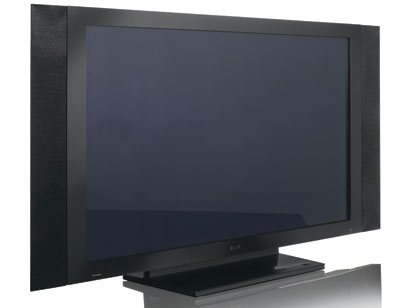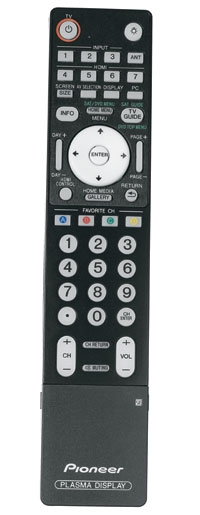Plasma vs. LCD: Round II Page 2

With this tech lesson in mind, this was an auspicious time to gather the best plasma and LCD sets we could find. One reason is that plasma panels with 1080p resolution have recently become more common, essentially putting plasma on a par with LCD in the critical area of picture detail. But even the advance hype didn't prepare us for the leap taken by Pioneer's new Kuro-series plasmas. At a time when LCD seems to be taking over the HDTV market and getting cheaper all the time, Pioneer has retooled its plasmas to command a premium in this competitive business. As Al Griffin pointed out in his review of the 50-inch PDP-5010FD (November 2007), these pricey sets are designed to deliver the deepest blacks of any consumer display, period. "Kuro" means "black" in Japanese, so there should be no mistaking the intention.
But this is no small feat. To stay ready to respond to the signal, plasma cells remain partially on at all times - meaning that some light is inevitable, even when the signal tells the cell it wants black. Pioneer reengineered its sets to reduce this "idling" brightness by a claimed 80%. No argument: the 5010FD pumped out the blackest blacks we'd ever seen on a flat-panel. It followed naturally that the higher end Elite PRO-110FD ($6,000) could represent state-of-the-art plasma.
Meanwhile, shortly after we tested the PDP-5010FD, Samsung delivered the 46-inch LN-T4681F (January), the first of its affordable LED-backlit LCD panels. No less critical an advance for LCD, these sets replace the fluorescent backlight with an LED array. Samsung's processing allows the normally full-frame, full-on backlight to be turned off or dimmed on the fly in certain areas of the screen to accommodate the dark parts of the image. That means less light leakage through the liquid crystals in their shuttered state - which means blacker blacks.
The LN-T4681F delivered, by a considerable margin, the deepest shadows we've seen from an LCD. So with the Pioneer Elite Kuro waiting in the wings, Samsung's 52-inch LN-T5281F ($4,500) was brought in to represent LCD in a Battle of the Blacks.
 Prepped and Ready As with our previous technology face-offs, both TVs had to be calibrated to deliver their absolute best image. Al Griffin, our technical editor, took on this task - one made easier by the fact that he'd recently tested similar versions of the same TVs. To make things absolutely fair, both sets were fed the same video signals through an HDMI splitter, allowing us to match their brightness to a comfortable level in our darkened studio. Thanks to Al's finely honed eye and his attention to detail, the TVs looked remarkably close on much of the initial program material we auditioned - by far the closest we've ever gotten contenders to look in a face-off.
Prepped and Ready As with our previous technology face-offs, both TVs had to be calibrated to deliver their absolute best image. Al Griffin, our technical editor, took on this task - one made easier by the fact that he'd recently tested similar versions of the same TVs. To make things absolutely fair, both sets were fed the same video signals through an HDMI splitter, allowing us to match their brightness to a comfortable level in our darkened studio. Thanks to Al's finely honed eye and his attention to detail, the TVs looked remarkably close on much of the initial program material we auditioned - by far the closest we've ever gotten contenders to look in a face-off.
To get a handle on the sets' performance, we used the HDMI splitter to simultaneously feed them test patterns from our HDTV signal generator as well as scenes from four demanding reference discs. If you haven't seen it, the HD DVD version of the delightfully goofy Adam Sandler movie Happy Gilmore is chock full of bright colors, including garden and golf-course greenery in every shade - a sure indicator of a TV's ability to reproduce a natural green palette. We also checked out the high-altitude climbing drama Vertical Limit, whose Blu-ray Disc edition, fittingly enough, helped us evaluate the TVs' reproduction of blue.
In addition, the snow scenes in Vertical Limit helped us see how the sets handled bright images. And the Blu-ray Disc of Black Book, a tense story that follows Nazi resisters during World War II, has many dark and shadowy scenes to check black reproduction, not to mention brightly colored period costumes to check color.
Of course, if you really want deep blacks, there might be none deeper ever committed to video than the outer-space scenes on the new high-def transfer of Stanley Kubrick's 2001: A Space Odyssey (available on both Blu-ray and HD DVD). Picture the hyper-white, sun-drenched spaceship models used for the film's pre-CGI effects shots set against a blanket of utter darkness that's sprinkled liberally with tiny points of bright light to impart the look of distant stars. It's hard to imagine anything more demanding for video, or any display that could reproduce the full impact of what you'd see while watching it on film.
Thus armed, we turned down the lights, called in contributing technical editor (and TV reviewer) Michael Trei to complete our trio of panelists, and got to work.




























































